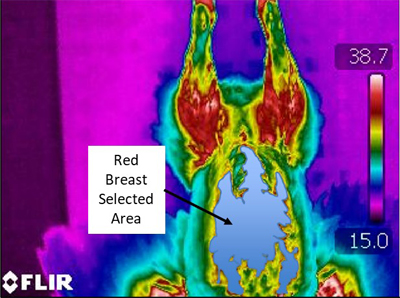The use of mixed light-emitting diodes and natural light in combination with daylength affects turkey hen performance, eye development, and feather coverage
Authors: Brooke Bartz and Jesse L. Grimes
Ger. J. Vet. Res
2021.
vol. 1, Iss. 3
pp:67-77
Doi: https://doi.org/10.51585/gjvr.2021.3.0023

Abstract:
Lighting is a complex management tool in turkey production, controlled by three parameters: length, intensity, and chromaticity. As light-emitting diodes (LED) increase in popularity as alternatives to traditional light sources, research regarding LED impacts on commercial-type turkey production is lacking. Therefore, turkey hens of the same strain were reared under experimental brooding and grow-out conditions with six lighting treatments. An environmentally and light-controlled facility (ECF) consisted of 5,000 Kelvin (K) LED or 5,000K + far-red LED (639nm) (RED) with either 12h short or 18h long daylength to test LED spectra. In the remaining treatments, hens were exposed to sunlight in a curtain-sided facility (CSF) as two treatments: 1) natural decreasing daylength from September to November (NAT) or 2) natural daylight + 5,000 K LED lighting with an 18h long blocked daylength (BLK). The intensity was 9 footcandles in the ECF and naturally fluctuating in the CSF. Hen’s performance was evaluated at 5, 9, and 14 weeks for eye development and feather coverage. Hens brooded and grown out under NAT light had significantly increased body weight gain compared to BLK hens for the same period. Hens reared with the RED LED spectrum had significantly increased eye anterior-posterior distance than birds raised in the NAT treatment. A significant reduction in red heat signature on the breast tissue in the NAT treatment compared to all other 18h treatments indicated improved feather coverage. However, these same results were not observed during serum thyroid hormone analysis. While turkey hens reared under different lighting programs had similar ending performances, lighting parameters significantly affected bird performance during the growing period, bird’s eye development, and body feather coverage. Therefore, potential effects on growth patterns and physiology should be considered when choosing a LED lighting program for turkeys.
Keywords:
Turkeys, LED light, Daylength, Eye measurements, Feather coverage, Kelvin temperature
Statistics:
Article Views: 2648
PDF Download: 41